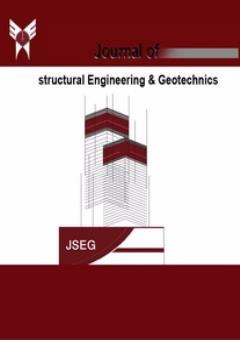Development of Fiber Reinforced SCM for Sustainable Construction
محورهای موضوعی : Structural EngineeringIman Mehdipour 1 , Nicolas Ali Libre 2 , Mohammad Shekarchia 3
1 - Construction Materials Institute, Department of civil Engineering, University of Tehran, Tehran, Iran
2 - Department of Civil Engineering, Islamic Azad University, Qazvin branch, Barajin St, Qazvin, Iran
3 - Construction Materials Institute, Department of civil Engineering, University of Tehran, Tehran, Iran
کلید واژه: Self-Consolidating Mortar, polypropylene fiber, Shrinkage, Mechanical Properties, Rheological Properties,
چکیده مقاله :
The sustainability of the built environment is increasingly coming to the forefront of infrastructure design and maintenance decisions. To address this, development of a new class of more sustainable cement-based materials is needed. Fiber reinforced self-consolidating mortar (FRSCM) was developed by optimizing the micromechanical parameters, which control composite properties in the hardened state, and the processing parameters, which control the rheological properties in the fresh state. The addition of fibers may take advantage of its high performance in the fresh state to achieve a more uniform dispersion of fibers, which can help to mitigate the shrinkage of the self-consolidating composite. In other words, fibers can have rheological and mechanical synergistic effects and that optimized fiber combinations can better increase mechanical performance while maintaining adequate flow properties for fiber reinforced self-consolidating mortar. In this study, effects of aspect ratio (l/d) and volume fraction (Vf) of polypropylene (PP) fiber on the free shrinkage and mechanical properties of FRSCM were investigated. Besides, the rheological properties of fiber reinforced SCMs are investigated by mini-slump and mini V-funnel tests. Nine mortar mixtures are prepared containing 0 to 0.7 percent of 6 and 12 mm length polypropylene fibers. The shrinkages of hardened mortar were measured since removing the molds and the measurements were continued up to six months. The results show that, the optimum volume fraction of polypropylene fiber content in SCMs to achieve appropriate rheological and mechanical properties is about 0.3% of the mixture volume. On the other hand, increasing the volume fraction and aspect ratio of PP fibers to about 0.7% causes the mechanical properties to drop considerably. This could be due to balling of fibers or fibers coagulation in the mixtures which decreases the mechanical properties.


